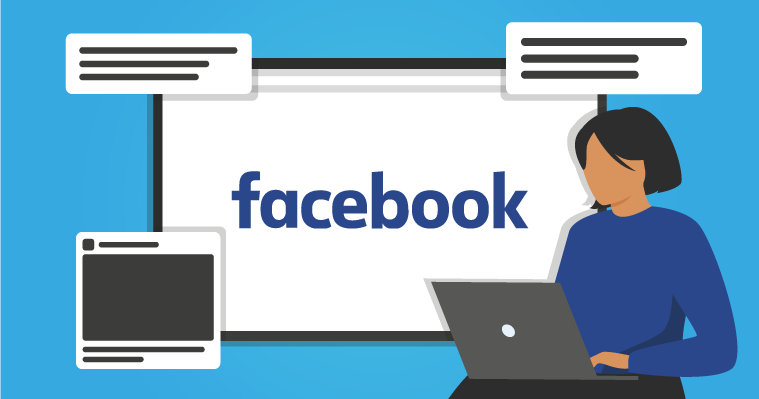Post map
ToggleTo deploy effective marketing campaigns, understanding the customer decision-making process is important. This allows you to comprehend why, how, and when do customers buy a product so you can develop appropriate promotional strategies to enhance interaction and maximize sales. Follow this article by Optimal FB Agency to learn more!
Understanding the customer buying process
The customer buying process is a series of steps in the purchasing of products or services. It begins from the moment the customer is unaware of the product to the point of purchase. Before buying, customers go through several steps that ultimately influence their buying decisions.
The stages in the customer purchase decision process include: recognizing a need, searching for information, evaluating options, making a purchase decision, and post-purchase evaluation. In reality, not every customer goes through all five stages. Since each individual has different needs and characteristics, some customers may skip certain stages and move on to others.
By monitoring, researching, and analyzing the customer purchase decision process, businesses can understand the psychology and behavior of customers and know when do customers buy a product. From there, companies can develop correct marketing strategies that bring better business outcomes, maximizing sales and profits.
Awaring needs
This is the first stage in the customer’s purchasing decision process. It occurs when customers realize they have a problem that needs solving and they need a product or service to satisfy their desires. Marketers need to identify the circumstances that trigger specific needs.
By researching the market and gathering information from reliable sources, marketers can identify factors that spark customer interest in a certain product type. This helps in planning marketing strategies to evoke customer interest.
Although this is the initial stage of the buying process, it is the most crucial for attracting new customers. It also creates opportunities to introduce and promote the value that the business’s products or services bring to customers.
At this stage, businesses can use various advertising channels to introduce their products or services to potential customers. These include social media advertising, banner ads, press advertising, event organization, email marketing,… Businesses need to accurately identify the target audience and create compelling advertising messages that resonate with the customer’s psyche. Additionally, you can learn more about the difference between competitive advertising and informative advertising. Additionally, you can find out more information about 10 steps to start a small business online
Searching for information about the product or service
Once customers are aware of their needs for a product or service, they begin searching for information. Sources of information they might use include asking friends, colleagues, viewing ads, mass media, or consulting with sales staff,…
Currently, most customers turn to Google to search for information when they need a product or service. They evaluate the sources to determine their reliability based on factors like financial resources, purpose of use, quality requirements, and features to make an informed decision.
Marketers need to understand which information channels customers use most for their searches. This allows them to plan promotions and introduce products or services on those channels to increase the likelihood of reaching their target customers.
Evaluating options
Through exploring different brands and services during the information search phase, customers proceed to compare and contrast to choose a brand or product that meets their needs. Businesses need to understand how customers evaluate their options through what criteria? Is quality or price more important?
Marketers need to understand how customers assess and compare different brands. By exploring issues such as product attributes that customers care about, customer trust in the brand, promotions, and after-sales services,…
Making a purchase decision
After reviewing and comparing options, customers make their final purchase decision. At this stage, customers have chosen the brand, product, and service they will buy to satisfy their needs. The task for businesses at this step is to ensure the product’s price and services are reasonable and the purchasing and payment process is as simple as possible.
Post-purchase evaluation
This is an important step to turn new customers into loyal customers of the business. To achieve this, you need to build good relationships and enhance the customer’s experience. By supporting customers throughout the use of the product or service to solve their problems, ensuring the product works well and making the customer truly satisfied and trusting your brand more. From there, they may make future purchases or recommend the product to friends.

When do customers buy a product?
By analyzing the customer purchase decision process, you can pinpoint the exact moment when customers buy a product. According to the stages of the customer buying process, the time when customers are likely to make a purchase starts from the end of stage 3 and the beginning of stage 4.
This is when customers evaluate their options and find that your product offers significant value to them, solving the problems they face. Your product has many outstanding features, reasonable prices, and more favorable policies and after-sales services compared to competitors. At this point, customers will buy your product.
To accurately determine when customers will make a purchase, you need to identify the reasons customers should buy your products:
Quality products or services
If the products or services you provide are of high quality and meet the needs and affordability of customers, especially if they solve the problems customers face, this increases the likelihood they will purchase from you.
Competitive pricing
For the same product or service that offers similar values and benefits, customers will choose the provider that offers them at a reasonable price. Therefore, you should focus not only on creating and providing quality products but also on offering competitive pricing.
Brand reputation
When evaluating between different product or service options, customers also consider the brand’s reputation. They will choose and buy products or services from reputable and reliable companies with well-known brands.
Convenience
If your business appears in front of customers and makes it easy for them to find, research, and buy your products or services, there is a high likelihood that customers will purchase your products and use your services.

Attractive offers and positive experiences
Your business provides customers with many special offers when buying products and using your services, while also delivering a positive experience during the purchase process. This increases customer loyalty, encourages purchases, and enhances sales and profit maximization for your business.
Diverse product and service options
When your business can offer multiple solutions to customers’ problems by providing a variety of products or services, customers are more likely to find something they are interested in and make a purchase.
Quality customer service
It’s not only necessary to provide quality products and services that solve customers’ current problems. If you also offer quality customer service, it can help build trust and loyalty with customers.
Furthermore, if you can demonstrate expertise and knowledge in your field, you might become a reliable source of information in the eyes of customers. Or provide personalized products that offer significant value to customers with unique, distinct marketing approaches. This contributes to encouraging customers to buy more products and use services from your business.
Which factors influence the customer buying process?
After knowing when customers purchase products, you should learn the factors that affect this process:
Depending on the economic situation, customers’ income will affect their purchasing decisions. The higher the income, the greater the purchasing power and vice versa.
If the products or services your business offers provide great value and meet the needs of customers, they will be ready to make a purchase. This factor is very important in the shopping decision of customers.
Demographic factors such as behavior, preferences, gender, lifestyle,.. greatly influence the needs and buying decisions of customers.
Psychological factors affecting the buying decision include perception, motivation, understanding, beliefs, and attitudes.
Additionally, social and cultural factors also significantly influence customers’ buying behaviors. Businesses need to pay attention to these factors when building a comprehensive marketing strategy to enhance business effectiveness and maximize profits.
You now have the answer to the question: “When do customers buy a product?” We hope this article will help you in deploying the most effective business, marketing, and advertising strategies!
Contact Info
Are you in need of Facebook advertising or need to rent a quality Facebook advertising account? Don’t worry! Optimal FB is a unit specializing in providing reputable Facebook accounts, as well as direct advertising support. Provides all types of advertising accounts such as casino facebook ads to help you reach and create fast conversions.
The consumer decision-making process consists of 5 basic steps. This is the process of evaluating and making purchasing decisions starting from recognizing the problem, searching for information, evaluating alternative options, making a purchase decision, and evaluating after the purchase.
By studying and analyzing the customer purchase decision process. This will help you understand the behavior of customers at each stage. Based on analyzing changes in their thoughts and perspectives, you can determine when customers are ready to buy. The transition in customer behavior will help you know the exact moment they are ready to make a purchase.


